George Washington (February 22, 1732 – December 14, 1799) was an American political and military leader who is often referred to as the Father of the United States due to his leading role in the formation of his country as well as in setting its foundation. When the American Revolutionary War began in 1775, Washington was made the Commander-in-Chief of the newly formed Continental Army. Through his able leadership, he transformed an inexperienced militia into a capable force that ultimately defeated the Great Britain. In 1789, Washington was unanimously elected as the first President of the United States. He served for two 4 year terms as president. Know about his leadership in the Revolutionary War and his presidency through his 10 major accomplishments.
Note: This article was originally published on 07 June 2015
Table of Contents
- The Key Questions
- Video
- Infographic
- N1 – Leading the Continental Army
- N2 – Victory at the Battle of Trenton
- N3 – Victory in the Decisive Siege of Yorktown
- N4 – Leading U.S. to Victory in American Revolutionary War
- N5 – The First President of the United States
- N6 – The Bill of Rights
- N7 – Suppression of Whiskey Rebellion
- N8 – Keeping U.S. out of French Revolutionary War
- N9 – Farewell Address
- N10 – One of the Greatest American Presidents
- Main Sources
The Key Questions
- Leading America to victory in the American Revolutionary War against the mightiest military power of the time
- Being unanimously elected as the First President
- Laying the foundation of the new nation
- Setting key precedents like being neutral in foreign conflicts and the two term limit for presidents
There are different views among historians regarding the ability of George Washington as a General. Some believe that he was not a good strategist and give credit to the French for making the strategy that led to America’s triumph. Washington is however praised for his bold decisions including his successful surprise attack at Trenton. Such victories restored patriot morale in one of the war’s darkest periods. Though he lost more battles than he won during the war, Washington never surrendered his army. Moreover, the diplomatic and political skills of Washington in addition to his strength of character and the respect he commanded set him apart from others as a general.
Washington, being the first president, set a solid foundation for America. Numerous departments were established like the Departments of State, War and Treasury. He kept the United States out of the French Revolutionary War; suppressed the Whiskey Rebellion in western Pennsylvania; and passed several important legislation including the Bill of Rights.
Video
Infographic

N1 – Leading the Continental Army
Prior to the American Revolution, George Washington had served in the French and Indian War (1754–1763) on the side of Great Britain against France. During the conflict, he had gained valuable military experience including how to organize supply, how to command, how to build forts and how to manage subordinates. The American Revolutionary War broke out with the Battles of Lexington and Concord on April 19, 1775. At that point, the colonial revolutionaries did not have an army. Instead, they relied on local militia.
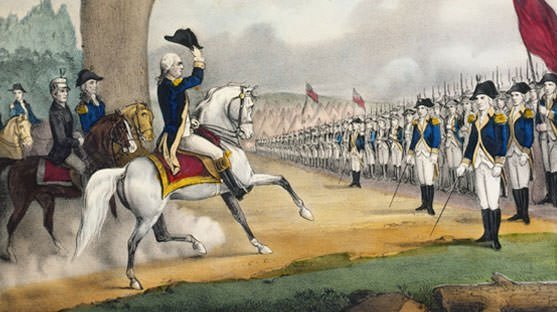
The Second Continental Congress convened on May 10 with Washington attending as a delegate from Virginia. Congress created the Continental Army on June 14, 1775. The following day, George Washington was appointed Commander-in-Chief of the newly formed army. Apart from his previous military experience, Washington was given the post due to his stature and in the hope that a southerner leading what was then majorly an army of northerners would help unite the colonies. Washington would go on to lead the Continental Army throughout the course of the Revolutionary War.
N2 – Victory at the Battle of Trenton
Washington began his campaign of the Revolutionary War with the successful Siege of Boston (April 19, 1775 – March 17, 1776) forcing the British out of the city. He then moved his army to defend New York. He was soundly defeated at the Battle of Brooklyn on August 27, 1776; narrowly escaping a disaster by evacuating his army to Manhattan. He then suffered a series of defeats that forced his army to withdraw completely out of New York and to retreat through New Jersey and into Pennsylvania. Due to these defeats, the morale of the Continental Army was very low and many men had deserted.
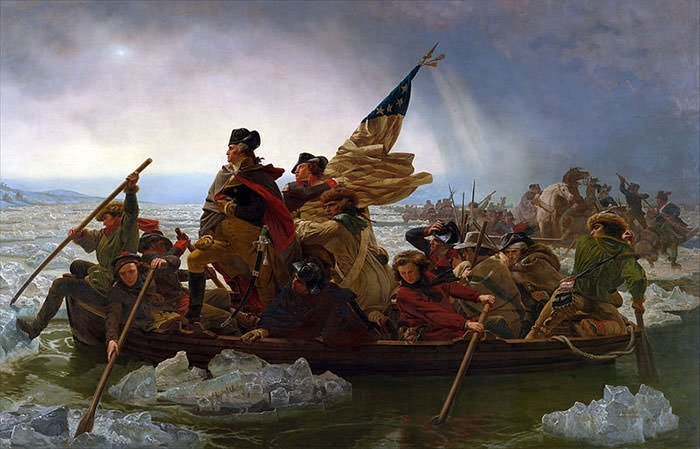
At such a juncture, Washington laid out a bold plan to attack the enemy forces stationed at Trenton in New Jersey. The American forces first made the famous crossing of the Delaware River, which was accomplished “with almost infinite difficulty”. They then swiftly defeated the German missionaries at Trenton capturing around 900 soldiers along with provisions; and arms and ammunition. Victory at the Battle of Trenton on December 26, 1776, is regarded as a pivotal movement of the Revolution due to its impact. Among other things, it boosted the morale of the Patriots and inspired people to join the forces. Washington followed up the success in Trenton with the capture of the British garrison at Princeton, New Jersey on January 3, 1777.
N3 – Victory in the Decisive Siege of Yorktown
Washington lost the Battle of Brandywine on September 11, 1777. The British followed this by taking the American capital Philadelphia and forcing the Continental Congress to move to York, Pennsylvania. However, American victory at the Battles of Saratoga convinced the French that the colonies could win the war. This resulted in the formal Franco-American alliance in 1778. The activities of George Washington from late 1778 to 1780 were more diplomatic and organizational.
On August 19, 1781, 3000 American soldiers under Washington and 4000 French soldiers under General Comte de Rochambeau began their march from Newport, Rhode Island, to Yorktown, Virginia. During this march, Washington send out fake dispatches to make British General Henry Clinton believe that his army was going to attack New York. This convinced Clinton that Lord Cornwallis in Yorktown was not in any danger.
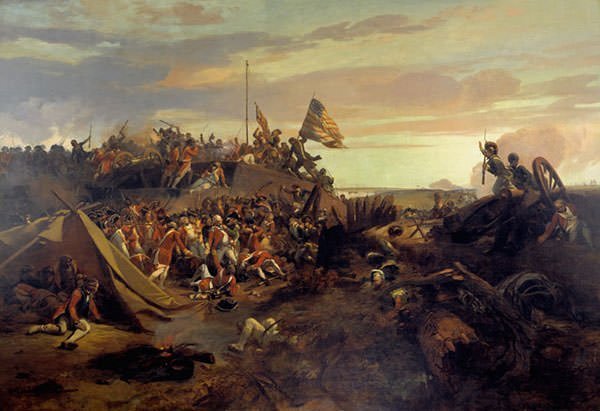
On September 28, 1781, Washington completed encircled Yorktown beginning the Siege of Yorktown. Off the coast, French Admiral François de Grasse strategically positioned his naval fleet to prevent escape or assistance through the sea. With his army’s supplies of food and ammunition exhausted; and no hope of escape; Cornwallis surrendered his army of some 8,000 men to General Washington on October 19, 1781. This effectively ended British hope of winning the war as they lacked the financial resources to raise a new army.
N4 – Leading U.S. to Victory in American Revolutionary War
The Siege of Yorktown was the last major battle of the American Revolutionary War. It forced the British to negotiate an end to the conflict. In 1782, peace negotiations began and on September 3, 1783, United States was recognized as a free and independent nation after signing of the Treaty of Paris. On December 23, 1783, General George Washington resigned as commander in chief of the Continental Army and returned to civilian life.
Washington performed a number of roles during the Revolutionary War. He directed the strategy of the war; turned the Continental army from inexperienced militia into a solid regular army; forced the politicians in Congress to support him; and emerged as the one who would lead the nation. Though he lost more battles than he won during the war, Washington never surrendered his army. He is also given credit for keeping a fighting force in the field through the difficult early years of the war.
Washington faced an opposition which was a superpower and had much more military experience. In comparison, the Americans had neither a standing army nor a navy; and its soldiers had little to none military experience. Moreover, throughout the war, he had to deal with shortages of men, shoes, shirts, blankets and gunpowder. In leading America to victory against such odds is a phenomenal achievement of George Washington.
N5 – The First President of the United States
After the Revolutionary War, Washington served as the president of the 1787 Constitutional Convention in Philadelphia. The historic result of the Convention was the crafting of the United States Constitution. From December 15, 1788 to January 10, 1789, the presidential electors were chosen in each of the states. Article II of the Constitution gave two votes to each of the electors. With 69 electoral votes, Washington won the support of each participating elector. He was thus unanimously elected the first president of the United States.
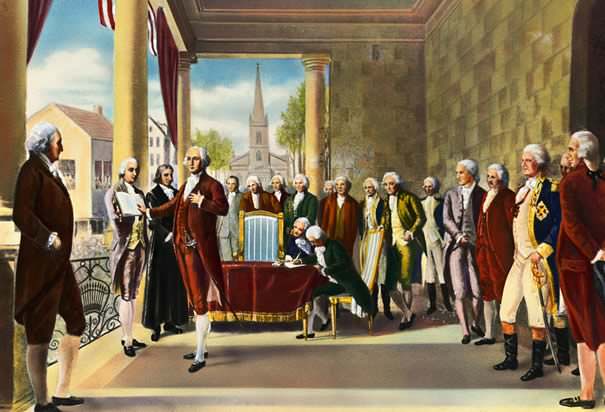
On April 30, 1789, at Federal Hall in New York City, the first capital of the United States, Washington took the presidential oath of office. In the 1792 United States presidential election, Washington was elected to a second term, again by a unanimous vote. In 1796, Washington declined to run for a third term of office, thus setting a precedent of a two-term limit which was followed till 1940 when Franklin D. Roosevelt broke the unwritten rule amid the Second World War. George Washington served as the first President of the United States from April 30, 1789 to March 4, 1797.
N6 – The Bill of Rights
As United States was a fledgling nation when George Washington took over as President, he went on to establish several precedents. The Departments of State, War and Treasury as well as the office of Attorney General were established. Each was headed by a presidential advisor forming the four man cabinet of George Washington.
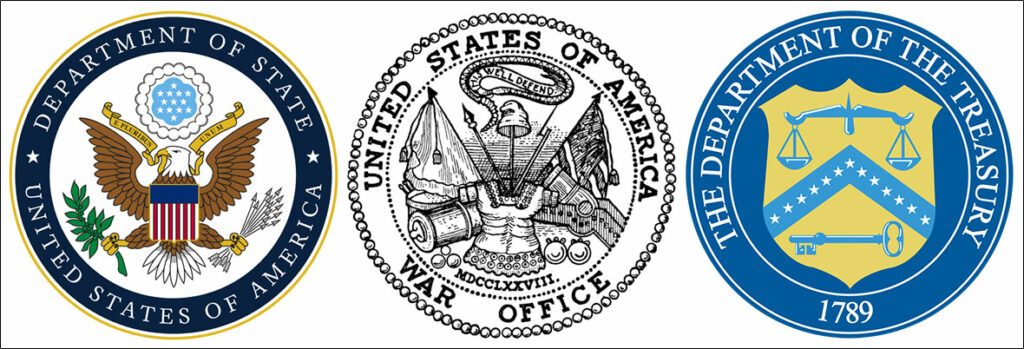
The most important legislation passed during the presidency of George Washington was perhaps the Bill of Rights. Congress approved 12 amendments to the U.S. Constitution on September 25, 1789. 10 of the 12 proposed amendments became ratified by the requisite number of states and became collectively known as the Bill of Rights. Among other things, the bill guarantees civil rights and liberties to the individual, like freedom of speech, press and religion. It sets rules for due process of law and reserves all powers not delegated to the Federal Government to the people or the States.
N7 – Suppression of Whiskey Rebellion
An excise tax on domestically distilled spirits, known as the “Whiskey Act”, became law on March 3, 1791. This taxation was violently opposed in western Pennsylvania with attacks on tax collectors and the formation of several well-armed resistance movements. The rebellion became known as the Whiskey Rebellion of 1794. George Washington summoned the militias of Pennsylvania, Virginia and several other states. He then personally took command of the 12,950 men in the build up to encourage them.
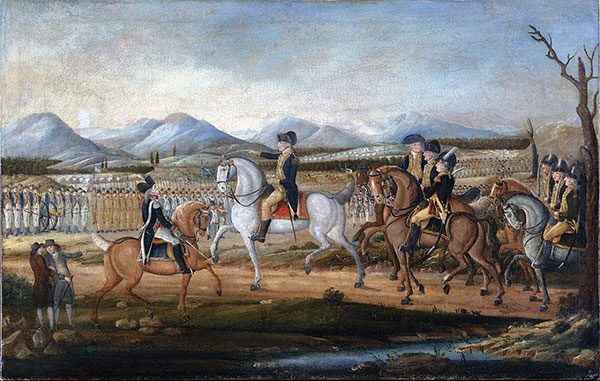
The army marched into Western Pennsylvania in October 1794. The rebellion collapsed quickly with little violence and the resistance movements disbanded. In crushing the Whiskey Rebellion, Washington set a precedent that dissatisfied minorities can protest peacefully but cannot take arms against even the most unpopular official acts.
N8 – Keeping U.S. out of French Revolutionary War
The foreign policy of the Washington administration was dominated by the French Revolution, which began in 1789. In 1792 war broke out in Europe between France and several European powers including Great Britain. Although there was pro-French sentiment in America, George Washington believed that the United States was too weak and unstable to fight another war. He thus issued the Proclamation of Neutrality on April 22, 1793 that declared the United States neutral in the war in Europe.
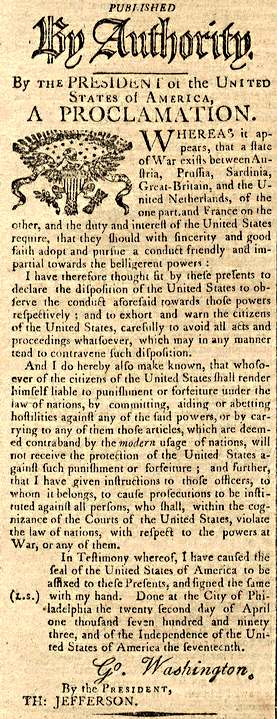
The Proclamation was formalized into law by the Neutrality Act of 1794, which made it illegal for an American citizen to wage war against any country at peace with the United States. The Neutrality Act has been updated but remains in force till date. George Washington thus kept the young nation out of war and set a key precedent of America being neutral in foreign quarrels. Other important foreign policy successes of the Washington presidency include the Pinckney’s Treaty, which resolved territorial disputes between the United States and Spain.
N9 – Farewell Address
After Washington decided that he would not seek re-election for a third term, he decided to write his farewell address with the help of his friend and Secretary of the Treasury Alexander Hamilton. It is to be noted that the initial draft of this address had been prepared by James Madison in 1792. Washington’s farewell address was first published in the American Daily Advertiser on September 19, 1796.
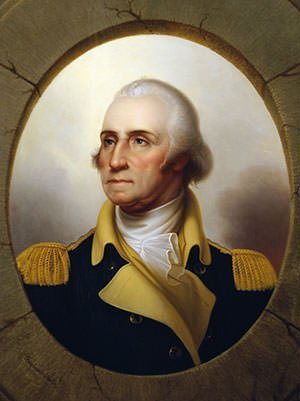
The 7,641-word document may be divided into three main principles. Washington first stresses on the importance of unity in the nation reminding Americans that “the Independence and Liberty you possess are the work of joint counsels, and joint efforts, of common dangers, sufferings, and successes.” He then warns of the dangers of putting party and regional loyalty above the interests of the nation. Finally, he states his belief that it is in the interest of the United States to stay clear of foreign disputes as it was the safest way to maintain national unity and stability.
Washington’s Farewell Address is considered to be one of the most important documents in American history. The recommendations made by him have exerted a strong and continuing influence on American statesmen and politicians.
N10 – One of the Greatest American Presidents
Twice during the American Revolution, George Washington was granted virtually unlimited power to carry on the war effort. He shouldered the responsibility and gave the authority back as soon as possible. Following the formal end of hostilities in the Revolutionary War, Washington resigned his commission as commander-in-chief and went back to his home. He did this when he was in a position to take solitary control of the new nation and become its dictator. Then, after becoming President of the United States, Washington willingly resigned after two-terms inaugurating the democratic traditions of the United States. It was Washington’s ability to cede power which sets him apart from other great leaders.
When he resigned from presidency, King George III proclaimed him “the greatest character of the age.” Due to his manifold leadership in the formation of the United States, Washington is often referred to as the “Father of His Country”. Along with Abraham Lincoln and Franklin D. Roosevelt, he is usually ranked among the top three presidents by historians and scholars. In the Murray-Blessing 1988 survey of historians, Washington was ranked 3rd; in the poll conducted by The Wall Street Journal of professors of history, law and political science in 2005, he was ranked 1st; and according to a Rasmussen poll conducted in 2007, he ranked 1st with 94% Americans viewing him favorably.
Main Sources
N1:-
“Ten Facts About George Washington and the French & Indian War”. George Washington’s Mount Vernon.
“George Washington’s Commission as Commander in Chief“. Library of Congress.
N2:-
“Dark Hour For The Rebels”. Public Broadcasting Service.
“George Washington Crosses the Delaware”. National Geographic.
N3:-
Freeman, Douglas S (1948–1957). “George Washington: A Biography”. pp. 5:152–155
Lengel, Edward (2005). “General George Washington”. p. 335
Davis, Burke (2007). “The Campaign that Won America”. p. 36.
“Surrender at Yorktown“. Library of Congress.
N4:-
Blythe, Bob. “George Washington (1732 – 1799)”. National Park Service, U.S. Department of the Interior.
E. Ambrose, Stephen (November 2002). “Founding Fathers and Slaveholders“. Smithsonian Magazine.
N5:-
“Presidential Election of 1789”. George Washington’s Mount Vernon.
“On this day: Term limits for American Presidents”. National Constitution Center.
N6:-
“The Bill of Rights: What Does it Say?”. National Archives.
Miller, John C. (1960). “The Federalists: 1789-1801”. p. 19.
Bordewich, Fergus M. (2016). “The First Congress”. pp. 102–103.
“The First Bank of the United States”. Office of the Historian. U.S. Department of State.
Nussbaum, Arthur (November 1937). “The Law of the Dollar”. Columbia Law Review.
N7:-
Knott, Stephen. “George Washington: Domestic Affairs“. Miller Center.
N8:-
Knott, Stephen. “George Washington: Foreign Affairs“. Miller Center.
“Neutrality Proclamation, 22 April 1793“. Founders Online. National Archives.
N9:-
Pruitt, Sarah (Feb 10, 2020). “George Washington Warned Against Political Infighting in His Farewell Address“. History.
“Religion and the Founding of the American Republic”. Library of Congress.
N10:-
Spalding, Matthew. (Feb 5, 2007). “The Man Who Would Not Be King“. The Heritage Foundation.
“George Washington resigns as commander in chief“. History.
Nichols, Curt. “The Presidential Ranking Game: Critical Review and Some New Discoveries”. Baylor University.

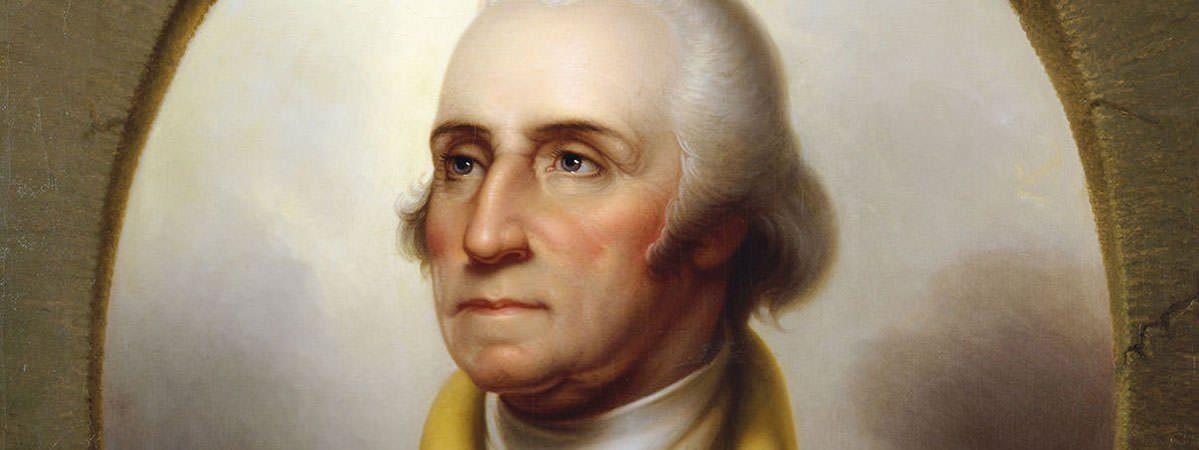
Thank you!
You’re welcome.